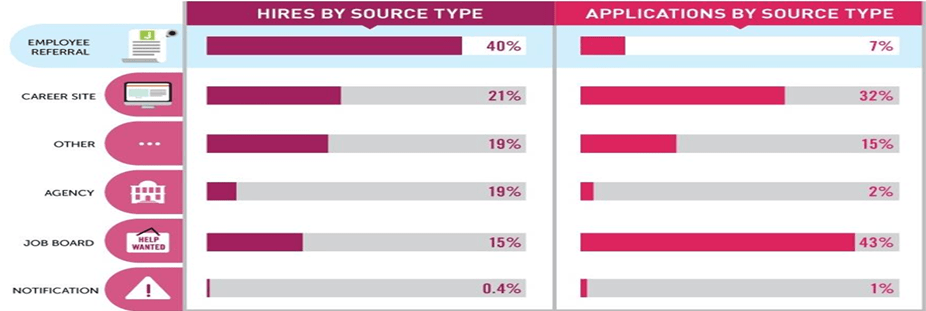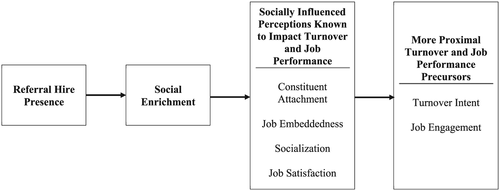You have better chance being accepted into Ivy league college than landing a job!
Nothing is permanent. Evolution is happening in every field as things can’t go like wise every time. We plan things to go on certain format as those are expected to follow the same path but this is not possible in reality. This means this will not limit our capability to cope up any scenario. There are many opportunities for each of us. What we need to see those is a keen eye on every prospective. There is no exception of this for today’s job market. There are many more ways to find a job rather than the conventional ones like job posting, advertisements or online job searching tools like LinkedIn. According to a study in Wall street journal, only 20% of the jobs are being posted by the typical posting methods and out of which only 2% people get hired. This is an alarming sign. Where are the rest of jobs going and how can anyone get those opportunities? The answer lies in the “hidden job market”.
COVID-19 and unemployment:
Most of us are unaware of this job market. It’s not the magical word with dreams jobs to land on those, but at least you can find a job of your choice at end if you know the right path and dynamics. After all that COVID-19 happening this year, many people have become jobless. According to a report of US labour department, the economists have estimated the rise in unemployment from 4.4% to 16%+. In a report published in Wall street journal, the unemployment rate is 16%. In this report it is also mentioned that the employer have cut 22million non-farm payroll jobs, which is equivalent to every job created in the past decade. According to the BBC, the USA’s unemployment rate has shot up to 33 million (BBC, 2020). Similarly, The Guardian tells us how the UK job market has taken its hardest hit in 100 years, with unemployment rising by 126% with an increase of 2.8 million. Moreover, the market also recorded the sharpest downfall in job vacancies forever (Inman, 2020).
This year has been financially distressing for many people. Social and corporate life has also been suffered. So the conventional ways of getting job has been compromised. In this time no one can rely on job postings and advertisements. Reason is that the businesses are suffering from COVID-19 and employers can’t afford to hire more labour along with the financial burden of advertising and marketing campaigns as these are very expensive. The typical method of recruitment is also a time consuming one.
Referral jobs:
How to get a job in this entire scenario? The answer lies in the hidden job market. There are many ways to find a job by this means but we will focus on referral jobs. Employee referral has become one of the favourite and most productive methods for finding talent. Employee referral program is your best bet for improving the most important hiring metrics such as time and cost per hire, quality of hire and employee retention. It is an internal and structured method by which employers ask their employees to refer peoples best fitted for the post and organization. Here is a brief comparison between hiring and application filling.

According to research and every recruiter and HR professional everyday work experience, the current job market is 90% candidate driven. That means you don’t pick talent anymore. Talent picks you. Referral hires have more job satisfaction and longer stay at their jobs than application filed hires.
An article in The Harvard Business Review shows that 1/3rd of the jobs internationally are filled through word-of-mouth connections rather than official postings. In fact, it is widely believed in the UK that most news jobs are acquired through word of mouth as they mostly arise in small or medium-sized enterprises (Lees, 2011). Similarly, an article in Business Insider quotes the president of Career Horizons, who verifies that around 70 to 80% of jobs are not published. Yet, most people are wasting time surfing the internet for employment (Belli, 2017). Now, that is a huge chunk of jobs you’re missing out on. He further adds that people need to get out and network, get to know employers, and make influential friends and acquaintances who can help them get hired. In fact, according to him, this is how hiring majorly works. This makes one realize that they’re peeping through the wrong window (Belli, 2017).
What to do to get a job and how to find a reference:
However, there is no need to despair. Don’t lose hope. The day can still be saved. Thousands of people get jobs without submitting a formal application, and you can be one of them. Here is what you need to do.
- Realize that companies are hiring people but they are not posting jobs or advertise as of cost to benefit ratio.
- Broaden your research horizon. A lot of networking can be made possible through social media platforms such as Facebook and Instagram. Find your referral in your close proximity and learn how to ask for their reference in order to get a job. I have found a lot of work sitting at home by merely joining relevant workgroups.
- Work on your skills and build yourself up individually. Professional degrees may get you an entrance ticket, but beyond that, your unique capabilities will take you farthest. And it’s not even tricky given that one can take courses and training online and often free of cost. This trend has become incredibly viable in the time of lockdown. So, make fair use of it.
- Know that companies prefer hiring employees through referrals rather than applications because this way, they know they are hiring the right person. So, make this your mantra: ‘just keep networking, just keep socializing.’ In other words, take a little inspiration from Nemo’s Dori. Inform all your friends and family that you are looking for a job. Don’t miss out on networking opportunities such as dinners or other social events.

- Make it easier for recruiters to find you. Use keywords in your resume to ensure maximum searchability on platforms such as LinkedIn and Indeed. Remember, the point is not to let go of these conventional methods altogether but to work smartly alongside them.
The hidden job market means nothing more than jobs that are not officially advertised. But the impact of this is profound. My only hope is that you realize that earning opportunities are out there in great numbers by reading this article. We need to know how to seize the day as jobseekers. This is why I hereby insist upon you to involve yourself in the hidden job market proactively. May the odds be in your favour!
Written by Biljana Čenić
References:
- US unemployment claims hit 33.3 million amid virus. (2020). BBC News. [online] 7 May. Available at: https://www.bbc.com/news/business-52570600.
- Inman, P. (2020). UK jobcentre claimants rise 23% to 2.8m amid coronavirus crisis. The Guardian. [online] 16 Jun. Available at: https://www.theguardian.com/business/2020/jun/16/uk-jobcentre-claimants-coronavirus-crisis-unemployment.
- Van Hoye, Greet. (2013). Recruiting Through Employee Referrals: An Examination of Employees’ Motives. Human Performance. 26. 451-464. 10.1080/08959285.2013.836199.
- Breaugh, J. A. (2008). Employee recruitment: Current knowledge and important areas for future research. Human Resource Management Review, 18, 103-118.
- Brown, T. J., Barry, T. E., Dacin, P. A., & Gunst, R. F. (2005). Spreading the word: Investigating antecedents of consumers’ positive word-of-mouth intentions and behaviors in a retailing context. Journal of the Academy of Marketing Science, 33, 123-138.
- Weller, I., Michalik, A., Mühlbauer, D. 2013. Recruitment source implications for organizational tenure. In Yu, K. Y. T., Cable, D. M. (Eds.), The Oxford handbook of recruitment: 139-160. New York: Oxford University Press.
- Castilla, E. J. 2005. Social networks and employee performance in a call center. American Journal of Sociology, 110: 1243-1283.
- Pieper, J. R. et al. (2019) ‘Referral Hire Presence Implications for Referrer Turnover and Job Performance’, Journal of Management, 45(5), pp. 1858–1888. doi: 10.1177/0149206317739959.
- Lees, J. (2011). Crack the Hidden Job Market. [online] Harvard Business Review. Available at: https://hbr.org/2011/08/crack-the-hidden-job-market [Accessed 2 Oct. 2020].
- Pieper, J. R. 2015. Uncovering the nuances of referral hiring: How referrer characteristics affect referral hires’ performance and likelihood of voluntary turnover. Personnel Psychology, 68: 811-858.
- Fernandez, R. M., Castilla, E. J., Moore, P. 2000. Social capital at work: Networks and employment at a phone center. American Journal of Sociology, 105: 1288-1356.
- Burks, S. V., Cowgill, B., Hoffman, M., Housman, M. G. 2015. The value of hiring through employee referrals. Quarterly Journal of Economics, 130: 805-839
- Pallais, A., Sands, E. B. 2016. Why the referential treatment? Evidence from field experiments on referrals. Journal of Political Economy, 124: 1793-1828.
- Belli, G. (n.d.). At least 70% of jobs are not even listed — here’s how to up your chances of getting a great new gig. [online] Business Insider. Available at: https://www.businessinsider.com/at-least-70-of-jobs-are-not-even-listed-heres-how-to-up-your-chances-of-getting-a-great-new-gig-2017-4
